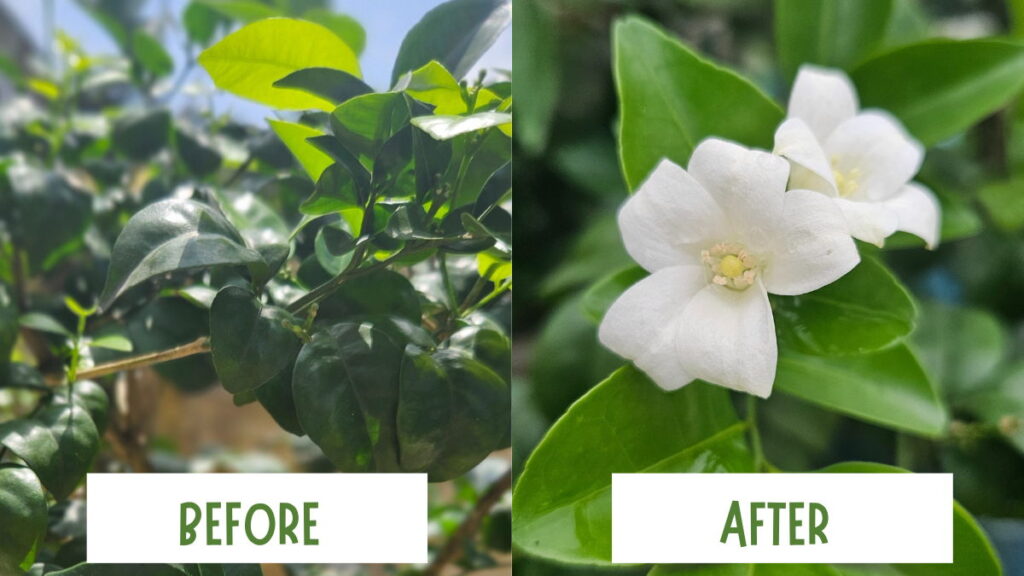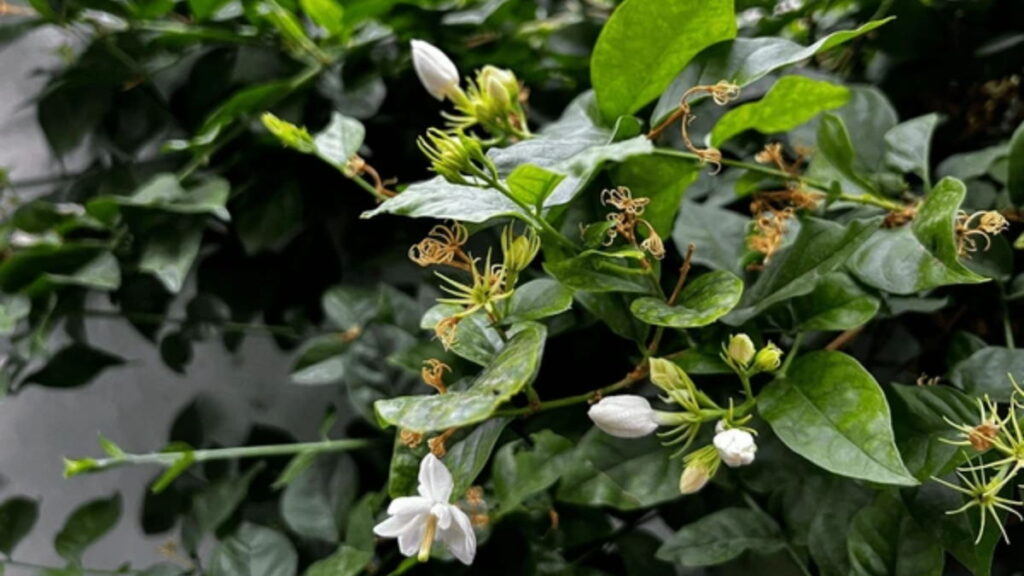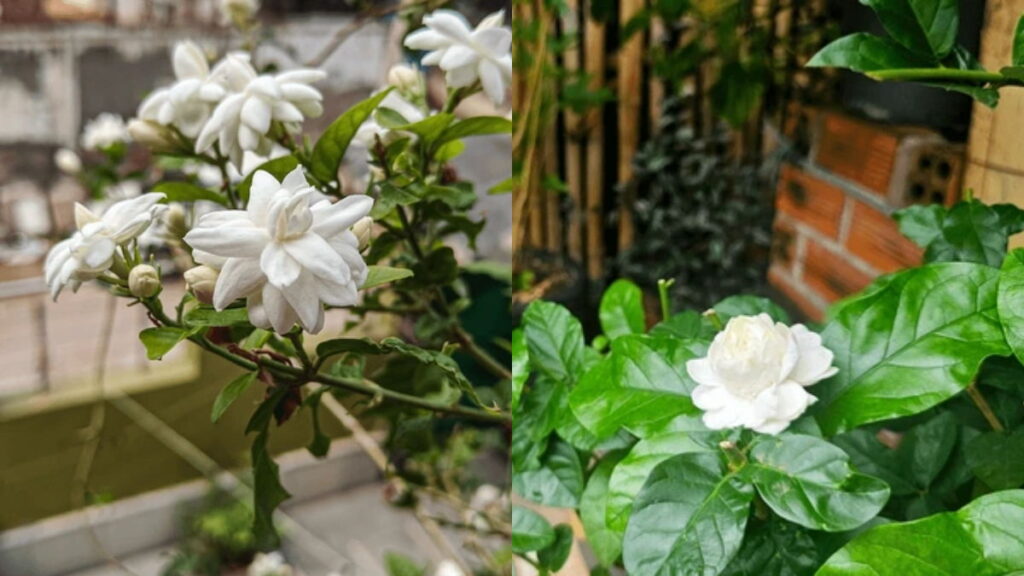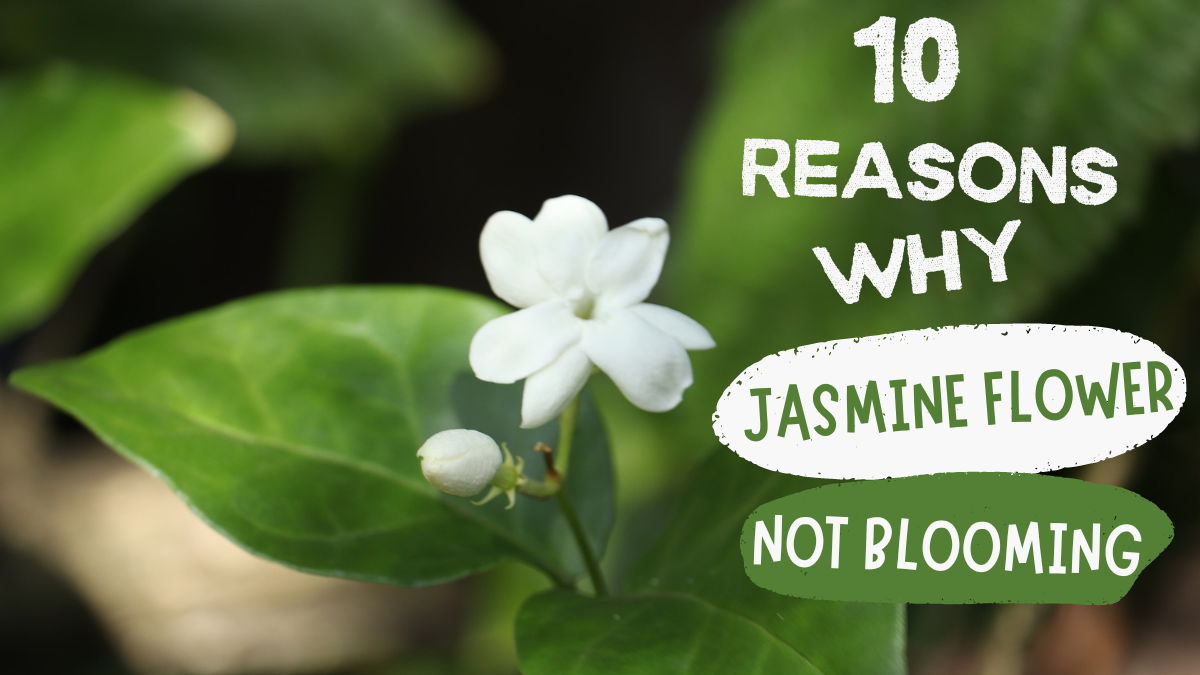Jasmine is considered one of the most charming plants for transforming the look of any outdoor space. Some of the jasmine varieties can be grown indoors as ornamentals. But what if, after giving all the effort and energy, your plant needs to reward you with its gorgeous aromatic blooms?
I know it’s very frustrating, and at that time, you will start looking for why jasmine flower not blooming. Don’t take any action in a hurry that you will regret doing. It’s time to unwrap the reason behind it, look for the reason, and then take action accordingly. Slowly, you will find that your plant will start producing gorgeous flowers.
There are many for a plant to have blooming flowers, but here we will discuss the most common reasons why jasmine flowers do not bloom. You must observe the plant, its requirements, and the factors supporting heavy flowering. After reading this article, I am sure you will solve the mystery and spot the symptoms.
10 Cause Why Jasmine Flower Not Blooming
- Pruning
- Sunlight
- Insufficient Water
- Poor Soil
- Fertiliser
- Pests
- Disease
- Too Large Container
- Insufficient Winter Rest
- Plant Age
Pruning
Not having a proper pruning schedule will hamper your jasmine plant, and the energy that the plant will use to produce aromatic flowers will now be used for the development and regrowing of its foliage. Some jasmine plants may take more than one blooming season to recover from the hard pruning.
Yes, pruning helps the plant grow new stems and branches, making the foliage denser and resulting in heavy flowering, but pruning at the right time is crucial, or you have to face the consequences. The best time to prune jasmine plants is at the end of summer after they have rewarded you with gorgeous fragranced flowers. Select the floral stems, dead or weak stems, and prune them; now, the plant has enough time to regrow its foliage till the next blooming season starts, which will increase the flowering in your jasmine plants.
Not Getting Enough Sunlight

With proper sunlight, your plant will find it easier to carry on the photosynthesis process and will be able to produce the energy required for growing buds. You have planted your jasmine either in a container or on the ground. It requires an ample amount of sunlight to bloom flowers.
Some jasmine varieties require full sunlight, and some can thrive in partial shade. Observe your plant for 1-2 days and track down how much sunlight the plant is getting. Also, observe other overgrown plants growing beside your jasmine plant blocking the sunlight and prune it. Before Planting your jasmine, I would prefer you to do some research accordingly.
Insufficient Watering
Overwatering and underwatering are the most frustrating problems faced by greenhorn gardening enthusiasts. Overwatering can lead to root rot, but that’s the worst-case. Soggy roots are a significant reason your jasmine plant is not blooming; let the upper layer of soil dry between watering. When your jasmine plant gets insufficient water, it becomes water-stressed and does not waste its energy producing blooms. Sometimes, you will discover tiny blossoms, but they will drop without blooming, which is not worth your efforts.
Water your ground jasmine plants once a week, and in summer, when days are hot and dry, you have to increase the watering frequency, but jasmine in a container or pot requires a different approach and needs to be watered multiple times on hot days. For the indoor variety, 1 cup of water every 9 days will be enough.
Poor Soil
Poor soil conditions can also impact less flowering; jasmine plants require adequate soil with a balanced pH level enriched with essential nutrients and a proper drainage capability. Lacking these qualities in a soi mix can hinder the proper growth of the plant and dull blooms.
Fixing poor soil conditions is very important for creating an amicable environment for jasmine plants; first of all, check that your soil mix is well drained so that it doesn’t retain water. Mixing organic matter like well-rotted manure or compost will double the soil nutrients.
If you want to prepare the best potting mix for a jasmine plant, a well-drained sandy loam soil would be best for mixing soil, compost, coco coir or coco peat, and vermiculite to prepare an optimal soil for a jasmine plant.
Fertiliser

Fertilizing your jasmine plant at the right time is very important to see your plant full of flowers in the blooming season. Fertilizers are necessary for providing essential nutrients to your jasmine plant and filling your plants with flowers. But before using any fertilizer on your plant, read the label to adjust the dosage.
But there needs to be more clarity among the newbies: when should I fertilize my jasmine plant?
The best time to Fertilise your jasmine plant is in its initial or growing phase or the flowering season. You can feed them mustard cake fertilizer, cow dung fertilizer, vermicompost tea, or kitchen waste compost tea at the initial stage. If you want to rely upon the available fertilizer mix, choose a phosphorus-rich fertilizer to boost flowering production.
Pests
Pests are significant problems behind the flowerless jasmine foliage; they will damage the jasmine buds and can destroy your plants’ health, so it’s essential to detect them early and deter them as soon as possible. Pests like budworms, gallery worms, and leaf rollers thrive on eating the buds and leaves of the jasmine plants.
Periodically checking for sucking insects like aphids, whiteflies, mites, and scales will save you from high infestation. These pesky pests devour by sucking the sap of your jasmine plant and can cause problems like stunted growth, plant distortion, and early leaf fall which will undoubtedly impact the flowering mechanism of the plant.
Note: Don’t use hard insecticide or pesticide on your jasmine plant because it will kill beneficial insects like bees and butterflies.
Disease
If your jasmine plant is not blooming flowers, then your plant might be dealing with some kind of disease like leaf blight. When this disease infects your plant, its leaves start curling and drying from the edges. In extreme cases, branches and buds also begin to dry, and you will witness less or no flowering in your plant.
A bacterial disease named Phytoplasma, which infects the jasmine plant, can lead to 100 % flowering loss. This disease is transmitted by other insects like leafhoppers. It infects the plant’s phloem tissue, which is responsible for the photosynthesis process. Some other diseases are jasmine plants, such as rust and mealybugs.
Fungal diseases can be treated by spraying fungicide or a solution of baking soda and water. Some bacterial infections can be treated by bactericides or by removing the infected parts from the plants so they can’t cover the entire plant.
Too Large Container

If you are growing jasmine plants in containers or pots that are not flowering, you must choose the container size accordingly because jasmine likes to be root-bonded to bloom happily. Don’t be in a hurry to repot your plant, and if needed, select a pot that would be perfect for your plant according to its size, not too big or too small.
Insufficient Winter Rest
After rewarding you with gorgeous summer blooms, potted jasmine enters a dormancy period where it restores its energy for the next blooming season. You should practice some methods during this period, like stopping feeding fertilizer, reducing the watering frequency, and ensuring the pot is in a dark place at night. Let them rest appropriately to rebloom their beauty in the next blooming season.
Plants Age
Gardening enthusiasts may find this point funny, but for greenhorns who have just planted their jasmine and are expecting the sweet-scented blooms, I have to say this: sorry, my friend, you have to wait longer; the majority of jasmine plants start blooming flowers. When matured, it will take almost 2-3 years to reward you with their gorgeous flower until, takes care of all its thriving needs, feeds it well, and does timely pruning.
Here’s a Bonus tip for figuring out why the jasmine flowers are not blooming.
Temperature Stress
Common jasmine loves to be planted in an environment where the climate remains moderate all year round, typically between 50 – 95 F, and if grown in hot and dry climates, make sure to use a green net or adjust the pot or container according to shade because when the temperature is too hot them plant became receptive to sunburn and if you leave the plant on its own then sunburn will damage the plant foliage and buds.
Conclusion
Some popular jasmine varieties, like standard and winter jasmine, are hardy and can be grown quickly. Still, check the Climatic conditions before selecting varieties to enjoy a stress-free growing experience. Now, you must do the half part: feeding at the right time, timely pruning, and changing the watering routine according to the season. Soon, your jasmine plant will bloom with gorgeous aromatic flowers like stars in the sky. If you have difficulty growing jasmine, Jasmine Blooming is your only stop.
Happy Gardening


1 thought on “10 Reasons Why Jasmine Flower Not Blooming ”